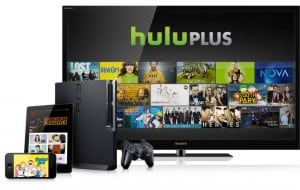TV isn’t Dead. But the TV? That’s Another Story
As a people-watching pop culture fan and life long student of marketing, I’m intrigued by the many death of TV and demise of traditional media stories that go something like this: Old media titans like Hollywood, cable TV and broadcast networks will continue to lose the battle for viewers to new digital media like YouTube, Funny or Die and Netflix.
While it’s certainly true that our entertainment and media consumption habits evolve over time, it’s important to realize that there’s a difference between TV and the TV. One is a medium and the other is a vehicle to watch that medium.
TV as a media outlet is not dying. We want more video when and where we want it. We still want to watch certain programs live, most notably sports. But the TV is no longer the center of our viewing experience as we use multiple screens—smart phones, tablets, laptops, desktops— to consume our content.
Our desire to do what we want when we want, combined with our consumption of media on multiple devices led the market to change. Binge watching of shows on Netflix or HBO Go has become commonplace. The community experience of watching a show at the same time as friends and family has gone the way of reading the newspaper.
The advertising industry frets over these big changes the way they did when other “new” media threatened the status quo. TV would kill radio. Cable would beat broadcast TV. Satellite radio would crush “terrestrial” radio. Mobile viewing will mean the death of TV.
Yet the more things change, one constant remains. Story telling as the driver of communication.
We know a good story when we see or hear one. We’ll talk about it with friends, family, co-workers and even strangers.
The story is still king and creatively telling yours is your first priority. Finding the right solution to distribute that story—the medium—to your target markets is next.
What does this mean for you?
Invest in your story. What you think they want to hear might not hit the mark. Do Marketing Intel to learn what customers really think and then build your story. Focus on one big idea and make an emotional impact.
Adjust your marketing campaigns based on how prospects and customers consume stories. Right now that means incorporating multi-screen, texting, online video, online radio and podcasts into your marketing mix to reach potential customers earlier in their research as opposed to later in their decision phase.
It’s not so much about whether new media beats up on old media. It’s more about telling your story, embracing the changing mediums and engaging your target audiences.
—
For more on TV, streaming content, and marketing, check out…


